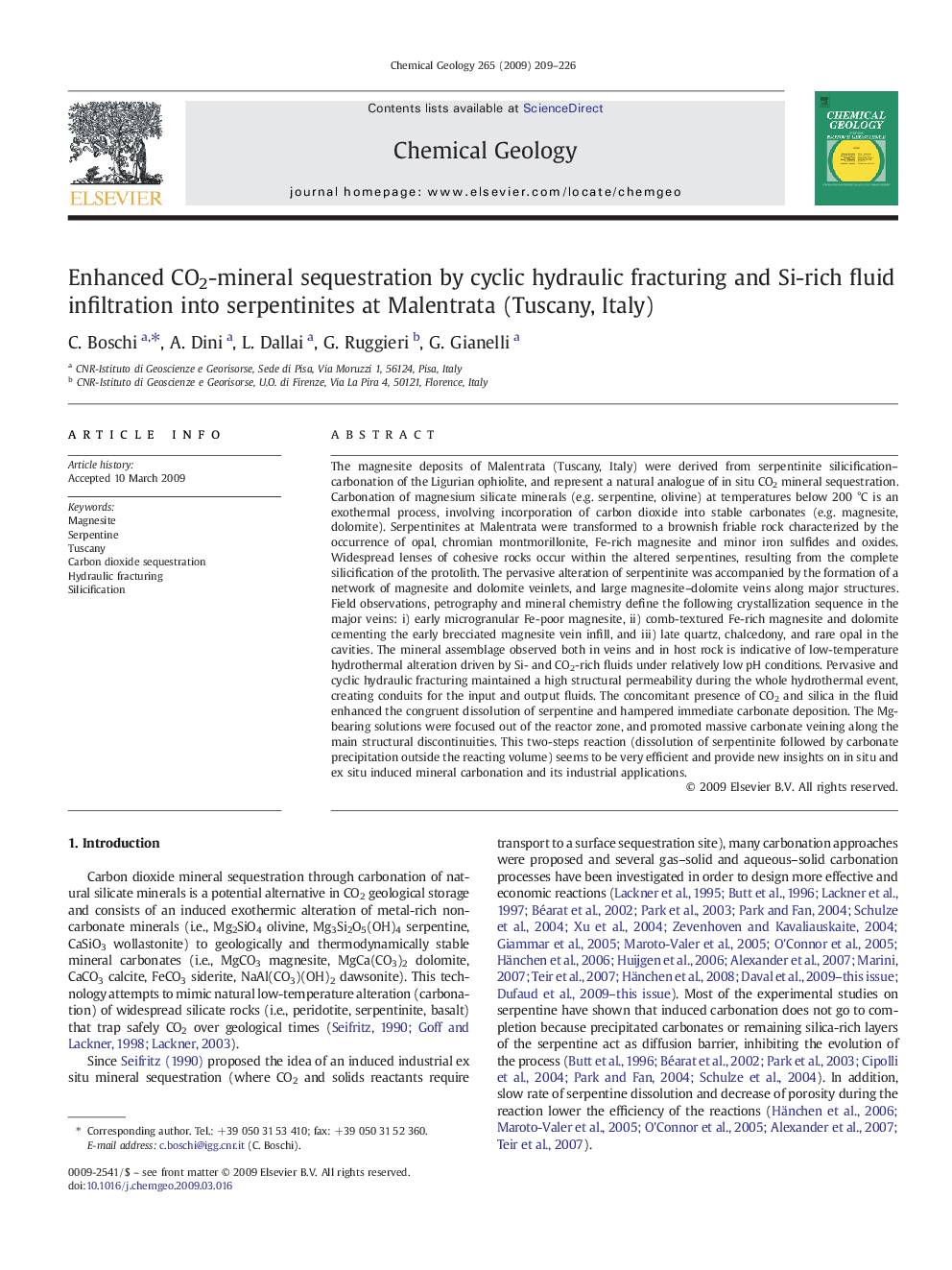| کد مقاله | کد نشریه | سال انتشار | مقاله انگلیسی | نسخه تمام متن |
|---|---|---|---|---|
| 4700159 | 1637704 | 2009 | 18 صفحه PDF | دانلود رایگان |

The magnesite deposits of Malentrata (Tuscany, Italy) were derived from serpentinite silicification–carbonation of the Ligurian ophiolite, and represent a natural analogue of in situ CO2 mineral sequestration. Carbonation of magnesium silicate minerals (e.g. serpentine, olivine) at temperatures below 200 °C is an exothermal process, involving incorporation of carbon dioxide into stable carbonates (e.g. magnesite, dolomite). Serpentinites at Malentrata were transformed to a brownish friable rock characterized by the occurrence of opal, chromian montmorillonite, Fe-rich magnesite and minor iron sulfides and oxides. Widespread lenses of cohesive rocks occur within the altered serpentines, resulting from the complete silicification of the protolith. The pervasive alteration of serpentinite was accompanied by the formation of a network of magnesite and dolomite veinlets, and large magnesite–dolomite veins along major structures. Field observations, petrography and mineral chemistry define the following crystallization sequence in the major veins: i) early microgranular Fe-poor magnesite, ii) comb-textured Fe-rich magnesite and dolomite cementing the early brecciated magnesite vein infill, and iii) late quartz, chalcedony, and rare opal in the cavities. The mineral assemblage observed both in veins and in host rock is indicative of low-temperature hydrothermal alteration driven by Si- and CO2-rich fluids under relatively low pH conditions. Pervasive and cyclic hydraulic fracturing maintained a high structural permeability during the whole hydrothermal event, creating conduits for the input and output fluids. The concomitant presence of CO2 and silica in the fluid enhanced the congruent dissolution of serpentine and hampered immediate carbonate deposition. The Mg-bearing solutions were focused out of the reactor zone, and promoted massive carbonate veining along the main structural discontinuities. This two-steps reaction (dissolution of serpentinite followed by carbonate precipitation outside the reacting volume) seems to be very efficient and provide new insights on in situ and ex situ induced mineral carbonation and its industrial applications.
Journal: Chemical Geology - Volume 265, Issues 1–2, 15 July 2009, Pages 209–226